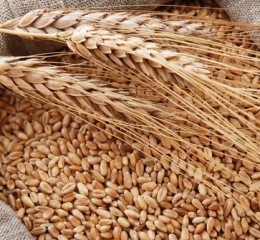


In theory, the raw materials required to make vodka are varied: fruits (one uses the juice), cereals, potatoes, beetroot. If the main item used is not a cereal (wheat, rye etc.) European legislation requires that to be stated on the label.
The first step in the process of making vodka is preparation of the “wort” (the basic material which will be fermented). For cereals, at least 10% of the grains to be used must first be malted. To do that the grains are plunged into warm water for several days. This process allows the cereals to generate enzymes, so transforming the starch into the sugars necessary for fermentation. The germinated grains are then dried and cleaned, following which they are smoked over peat and ground. The preparation is then heated and brewed again. Finally, there's fermentation. The yeast is added to the wort and the grains … and the sugar becomes alcohol.
Through distillation the wort produces alcohol. Heating it initially produces ethanol (the alcohol) which is captured in a tube and condensed while being suddenly cooled externally. The distiller constantly measures the alcohol level at the exit from the still. At the beginning of the distillation process the percentage is higher. The new vodka is finally filtered (across charcoal) and possibly flavoured.
Vodka on its own is a flavourless, pure alcohol. That is why it's often drunk in a cocktail (eg with orange or apple juice) or fruit flavours are added, such as strawberry, honey, cherry, lemon or cranberry. Zubrovska, the Polish vodka, uses 'buffalo grass' - an aromatic plant, like oats, which grows In Poland and is harvested in summer when mature - that produces an amber-coloured vodka with hints of oats. To accompany your caviar, you should certainly choose a neutral-flavoured vodka.